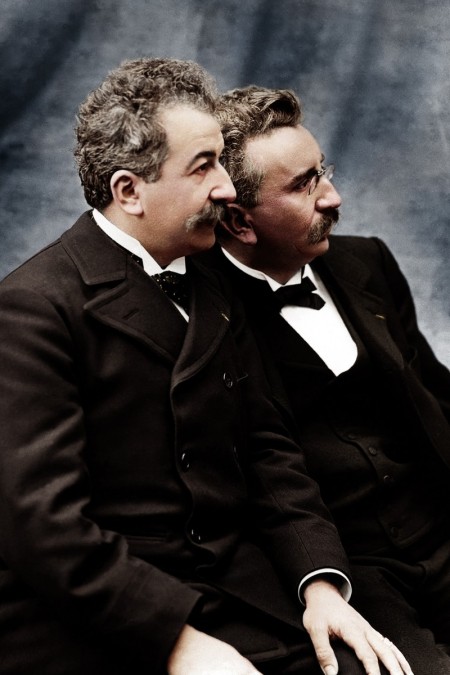Louis and Auguste Lumière

The Lumière brothers were the first filmmakers in history. They patented the cinematograph, which in contrast to Edison’s kinetoscope allowed simultaneous viewing by multiple parties. Their first film, Employees Leaving the Lumière Factory, shot in 1895, is considered the first true motion picture.
Louis had a sister named Jeanne and two brothers, Edouard and Auguste. His father, Antoine, was a photographer who had spent most of his life in his studio experimenting with photographic chemistry techniques.
In 1880, after graduating from high school, Louis Lumiere joined his brother and father in the family photo studio. Together they developed the process of the “dry” plate, a new technique that would be crucial to the transition to picture film.
In 1894, Antoine Lumiere, now retired, attended a demonstration of Thomas Edison‘s Kinetoscope, but he was disappointed that it was able to reproduce animations just for one person at a time. When he returned home, he spoke of what he’d seen with his two sons, talking about the chance to build a similar device, but that could be used by many people simultaneously.
So it was that Louis and Auguste Lumiere began to work on developing a new invention that could capture photographic images in sequence. Using a film perforated by small holes, it could advance images thanks to a mechanism activated by a crank: the cinematograph. That machine was not only lightweight and portable, but allowed, just replacing the front lens, to switch between “camera” and “projection” mode.
In 1895. the two brothers make the first public performance in history, at the Grand Café of the Boulevard des Capucines in Paris. It was a revolution, and in fact they were immediately inundated with requests for rental or sale of that prodigious machine.
A few years later the Lumiere, convinced that cinema was an invention without future, abandoned their activity of filmmakers and returned to devote themselves to photography.